Description
What is a Printed Circuit Board PCB Antenna UWB Antenna For Wireless Applications?
The CTRF-ANTENNA-PCB-2401050-5050-SMA PCB Antenna UWB Antenna For Wireless Applications is a 50x50mm Printed Circuit Board size SMA female connector antenna internal manufactured by C&T RF Antennas Inc.
The ultra-wideband antenna UWB Antenna For Wireless Applications is available at C&T RF Antennas Inc., the internal & external UWB antenna supplier in China.
C&T RF Antennas Inc provides internal & external antennas with antenna radio frequencies such as NFC, 169MHz, 230MHz, 315MHz, 433MHz, 868MHz, 915MHz, VHF&UHF, Lora, NB-IoT, ADS-B, GSM, GNSS, GPRS, 1.2 GHz, 1.4 GHz, 1.8 GHz, Wi-Fi 2.4 GHz, 5.8 GHz, Cellular 2G, 3G, 3.5 GHz, 4G LTE, GPS, 5G NR, 6G, etc.
C&T RF Antennas Inc. provides RF antennae with Omni & Directional antenna types such as Dipole Antennas, Whip Antennas, Marine Antennas, Router Antennas, MIMO Antennas, Combo Antennas, PCB Antennas, FPC Antennas, Spring Antennas, Magnetic Antennas, Sector Antennas, Yagi Antennas, and Accessories, etc, for IoT & M2M industries.
Contact us for the PCB UWB Antenna For Wireless Applications datasheet, PCB UWB Antenna For Wireless Applications pricing, and inventory on the Printed Circuit Board PCB Antenna UWB Antenna For Wireless Applications.
UWB Antenna For Wireless Applications Specifications:
UWB Antenna For Wireless Applications Electrical Specifications |
|
| RF Antenna Type | PCB Antenna |
| Model | CTRF-ANTENNA-PCB-2401050-5050-SMA |
| Frequency | 2.4GHz-10.5Hz |
| Gain | 6dBi/8dBi |
| VSWR | ≤3.0 |
| Impedance | 50 Ω |
| Polarization | Vertical/Linear |
| Connector | SMA Female |
| Lightning Protection | DC-Ground |
UWB Antenna For Wireless Applications Mechanical Specifications |
|
| PCB Board Dimension | 56*47mm |
| Weight | Approx. 10g |
| Material | PCB Board |
| Operation Temperature | -40˚C ~ +75˚C |
| Storage Temperature | -40˚C ~ +80˚C |
| Color | Green |
| Antenna Design | Dipole Antenna |
| Mounting | Screw |
| Safety Emission and other | RoHS Compliant |
UWB Antenna For Wireless Applications Technology
Ultra-wideband wireless technology is a short-distance, the most advanced wireless communication technology that uses bandwidths above 1 GHz and has low signal power spectral density.
The technology was first proposed by the US Department of Defense in 1989, and in April 2002, the Federal Communications Commission (FCC) issued preliminary specifications for UWB equipment. At present, UWB technology is gradually getting more and more applications in short-range wireless communication.
The definition of UWB includes any system that uses an ultra-wide spectrum. Any radio system is called an ultra-wideband system as long as it meets one of the following conditions:
In (1) and (2), fH and fL are the high-end frequency and low-end frequency of the transmission bandwidth, respectively.
Ultra-wideband wireless communication has the following characteristics:
(1) High transmission rate. Because the frequency band of the system is very wide, according to the Shannon channel formula, in the case of a low signal-to-noise ratio, the system can also achieve a transmission rate of several hundred megabits per second to 1 Gbit/s over a short distance.
(2) High positioning accuracy. Because of the use of very short-duration narrow pulses and strong temporal and spatial resolution capabilities, the multipath resolution of UWB signals is extremely high.
Ultra-wideband radio communication can integrate positioning and communication. Unlike GPS, which provides absolute geographic location, a signal in the form of a baseband narrow pulse can give a relative position, and its positioning accuracy can reach the centimeter level.
(3) Sharing spectrum. Because the signal is spread over a wide spectrum, the power spectral density emitted by the system is very low, which is similar to background noise for other systems, so it can share the spectrum with other narrowband signals.
(4) Strong penetrating power. Because the baseband narrow pulse contains more low-frequency components, it can smoothly pass through the ground, concrete, water, and other media for detection.
Standardization Process of UWB Antenna For Wireless Applications
In standard formulation, the IEEE802.15.3 standard group is the main promoter of using the UWB Antenna For Wireless Applications physical layer standard. After the Federal Communications Commission (FCC) launched ultra-wideband, the IEEE 802.15.3 standard organization established two task groups, 802.15.3a and 802.15.4a, in 2003 and 2004.
The former is used to draft high-rate communication standards, and the latter is dedicated to drafting low-rate communication standards.
The IEEE802.15.3a task group has concentrated on the standards advocated by the UWB Forum and the Wi-Media Alliance: DS-UWB and MB-OFDM.
DS-UWB is dominated by Freescale, and MB-OFDM is dominated by Intel, Kodak, Microsoft, HP, and TI.
The DS-UWB proposal adopts spread spectrum technology, using the low band from 3.1 to 4.9 GHz and the high band from 6.2 to 9.7 GHz. The low-band communication rate is 28 Mbit/s to 1 Gbit/s, and the high-band communication rate is 2 Gbit/s.
The MB-OFDM proposal uses OFDM technology to divide the UWB spectrum into 14 bands, each with a bandwidth of 528MHz, which supports a communication rate of 53-480Mbit/s.
At the IEEE802 meeting held in January 2006, 802.15.3a was voted to disband the task group, which caused the UWB standardization process in IEEE to be terminated; it also made two different standards compete in the global market.
The work of the 802.15.4a task group is relatively smooth. A low-rate UWB scheme based on the spread spectrum is being drafted into the standard. After a year of preparation in 2006, the official standard is expected to be released in 2007.
The mission requirements of the low-rate UWB solution include positioning accuracy within 10cm, a communication distance of 30m, and a transmission rate of not less than 1Mbit/s. The organization dedicated to advancing the IEEE802.15.4a low-rate personal area network technology standard is the ZigBee Alliance.
Main research issues of wireless sensor networks based on ultra-wideband
At present, the research of ultra-wideband technology in wireless sensor networks mainly focuses on the design of space physical layer interface, the design of network node positioning, and the design of the MAC layer algorithm to solve the problem of channel resource allocation.
Physical layer design
The design goal of the physical layer is to provide reliable communication in various application scenarios, reduce multipath interference in mobile communication in an effective way, provide point-to-point high-speed video communication and audio signal transmission that meets the real-time requirements of the system, and solve the problem of sensor network The problem of reduced network throughput caused by multi-hop transmission.
Positioning design
In application scenarios such as target detection, target tracking, target search, guidance, and routing, wireless sensor networks require sensor nodes to be able to determine their physical location.
In order to solve this problem, research institutions have proposed many positioning schemes in recent years. In general, the common point of these schemes is that the geographic location of a few nodes in the network should be determined first by GPS or manual initial configuration;
The difference is that some are directly located by the distance and angle of point to point, and some are located by neighboring nodes. Relationship positioning.
In comparison, the former method can provide accurate positioning, but it has high requirements on hardware due to the need to perform accurate distance and angle measurement; the second method has low positioning accuracy but has low hardware requirements.
Most of the current solutions are designed for application scenarios with good conditions. If in a battlefield environment, the enemy may use the shortcomings of these positioning schemes to attack, thereby destroying the performance of the entire network system.
For example, impersonating the node under test, sending false response signals, intercepting real response signals from the node under test, etc.
By adding spatially movable sensor nodes in the entire communication coverage area, the security of sensor network positioning is improved, and a mobile-assisted secure positioning mechanism based on the UWB sensor network is formed.
The difference from traditional positioning methods is that this mobile-assisted algorithm does not require each sensor node to accurately measure the distance to the cluster head and perform minimum mean square estimation (MMSE).
It only needs to respond to the moving node signal and measure the distance. Tasks such as positioning calculations are transferred to the mobile node for completion.
It is recommended that UWB sensor networks use multi-antenna transceivers for positioning to further improve accuracy; UWB Antenna For Wireless Applications.
On the basis of using UWB for positioning, it is recommended to use different modulation techniques for different link situations;
UWB’s precise positioning function is used to determine the topology of the static sensor network. On this basis, the relationship between energy consumption and routing selection is deduced based on the principle of the least energy saving.
UWB technology has become a very promising technology in the field of wireless communication by virtue of its advantages in bandwidth, power consumption, positioning accuracy, etc.
As it meets the requirements of wireless sensor networks for low power consumption, low cost, simple structure, and high positioning accuracy, ultra-wideband technology will become one of the most ideal communication protocols at the physical layer of wireless sensor networks and will provide new applications for wireless sensor networks Development opportunities.

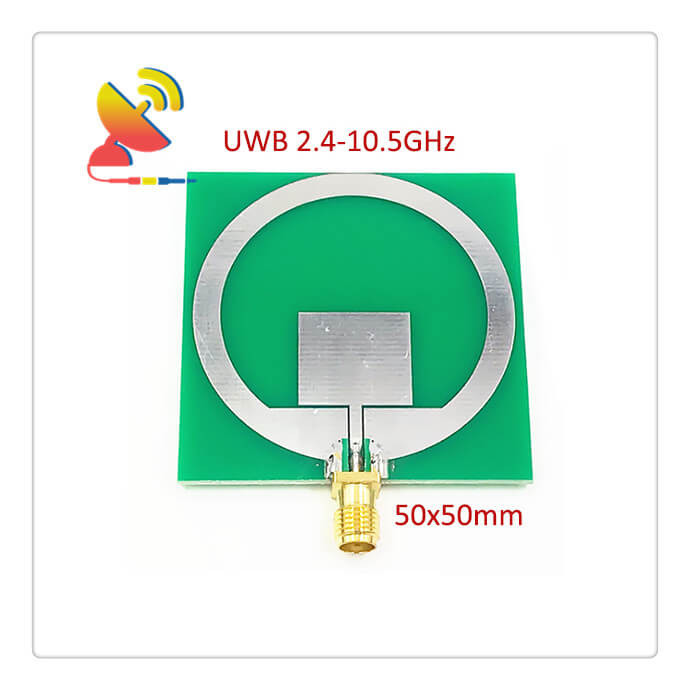
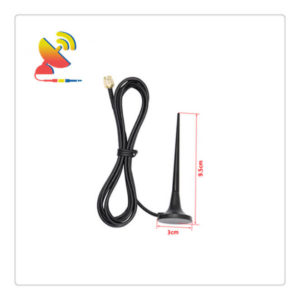
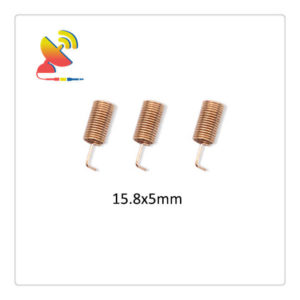
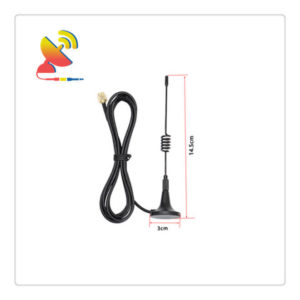
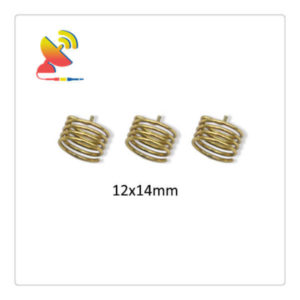
Reviews
There are no reviews yet.